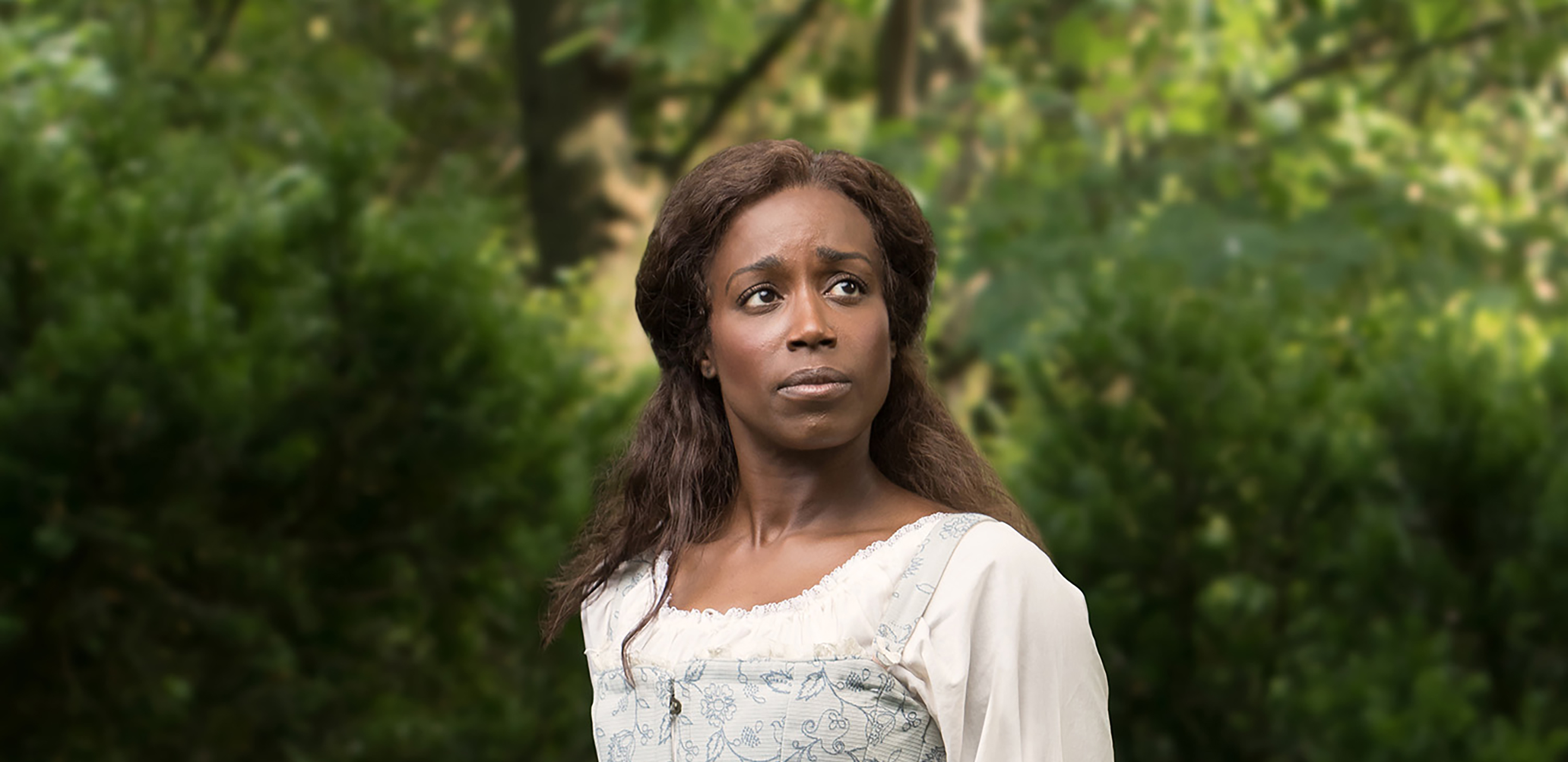
Presenting Historical Fiction at Historic Ford’s Theatre
At Ford’s Theatre, we often face an interesting dilemma when presenting plays and musicals that have ties to history. Because Ford’s is inextricably tied to our national history with the assassination of Abraham Lincoln on April 14, 1865, many in the audience expect any aspect of American history portrayed on our stage to be 100 percent truthful to the facts.

There are many potential problems with this perception. First, in the case of plays or musicals set hundreds of years ago, we don’t have the full picture of what happened. After all, there is the adage, “history is written by the victors.” Even in the case of characters like Thomas Jefferson and George Mason, who you’ll see in Jefferson’s Garden, and about whom a wealth of information is available, we don’t know everything about who they were as humans. We don’t know every interaction they had. And for the many people whose stories weren’t being recorded, those stories are more often than not lost to time. But this doesn’t mean that their stories didn’t happen.
Secondly, not all plays with a significant historical background are necessarily intended to be completely accurate reflections. It’s not that the facts don’t matter; it’s how the facts and individuals of a specific time are used as a starting point from which playwrights delve deeper into social truths.
Historical fiction is, as the name implies, an amalgamation of history and fiction. In historical fiction, the time and place in history are integral to the understanding and success of the story, but it is left to the author to determine how their characters think and behave within that context. In Jefferson’s Garden, actual historical people are shown living alongside and interacting with purely fictional characters created for this particular story. Although even the purely fictional characters are based on historical fact: there were Quakers living in the colonies during the Revolutionary War and there were also enslaved people living and working in Virginia. The cultural and political climate in early American history were a springboard for playwright Timberlake Wertenbaker’s storytelling.
Ford’s Theatre wants to tell compelling, exciting and diverse stories about the American experience, one of the many reasons Jefferson’s Garden was selected for our season. This play allows us to explore a pivotal time in our nation’s history, in which the historically accurate time, place and circumstances are just as important to the real-life characters, like Thomas Jefferson, James Madison, and James and Sally Hemings, as they are to the fictional ones like Christian and Susannah.

Design choices also can help to integrate theatricality and actuality. In Jefferson’s Garden, costume designer Ivania Stack created a series of designs that vary in their complete authenticity to the time period. History is the basis for all her work, but some characters only utilize a few specific costume pieces to give the essence of the period and character. Some designs have the line of the silhouette that is period correct, but utilize anachronistic materials to create the look. Some looks are exaggerated.
Choices like this are often employed in theatrical design, as they enhance the theatricality of a production, help deepen storytelling values, and are a way to communicate history and fiction to the audience, as well as means to enhance thematic elements of the play and create visual metaphors.
As director Nataki Garett notes, we often use the past as a lens through which to explore the present, and better understand the future. And, by seeing Jefferson’s Garden, audiences should begin to ask, where do I fit in this version of American history and how do I continue to support or dismantle the consequences of history today in the 21st century?
A version of this post appears in the playbill for Jefferson’s Garden at Ford’s Theatre.
Patrick Pearson was Director of Artistic Programming at Ford’s Theatre.

